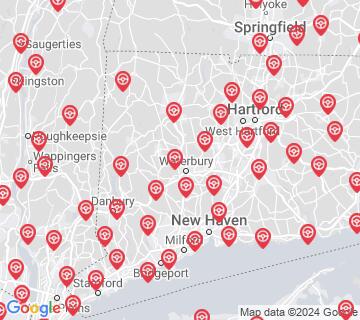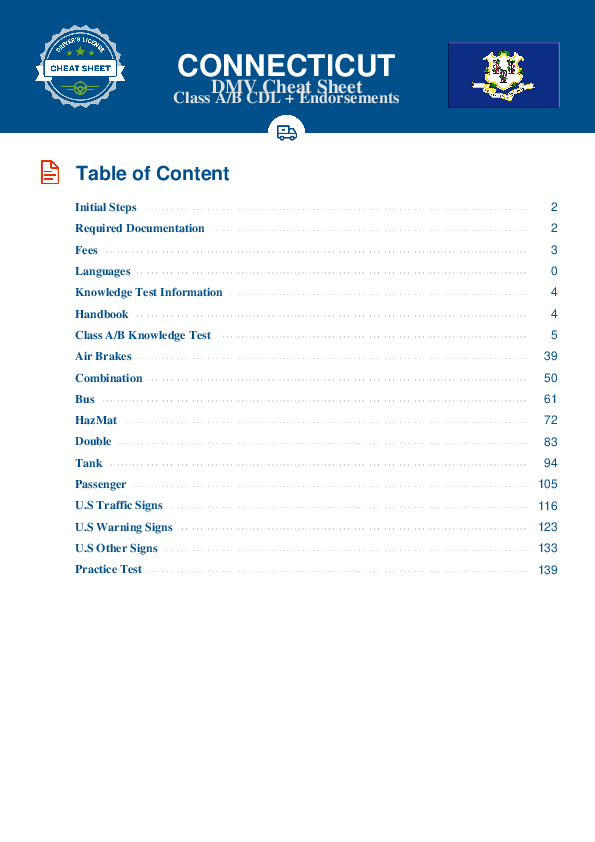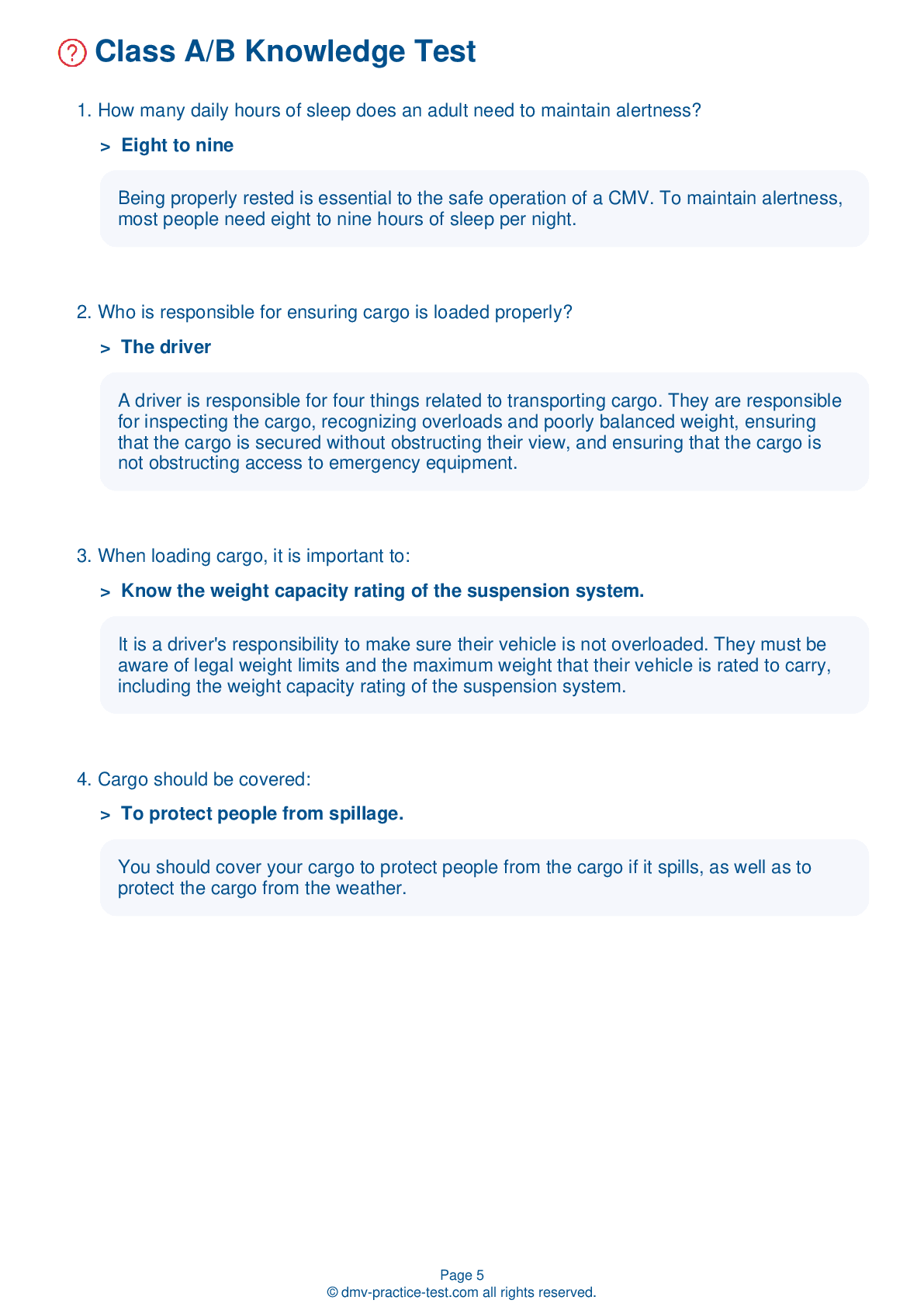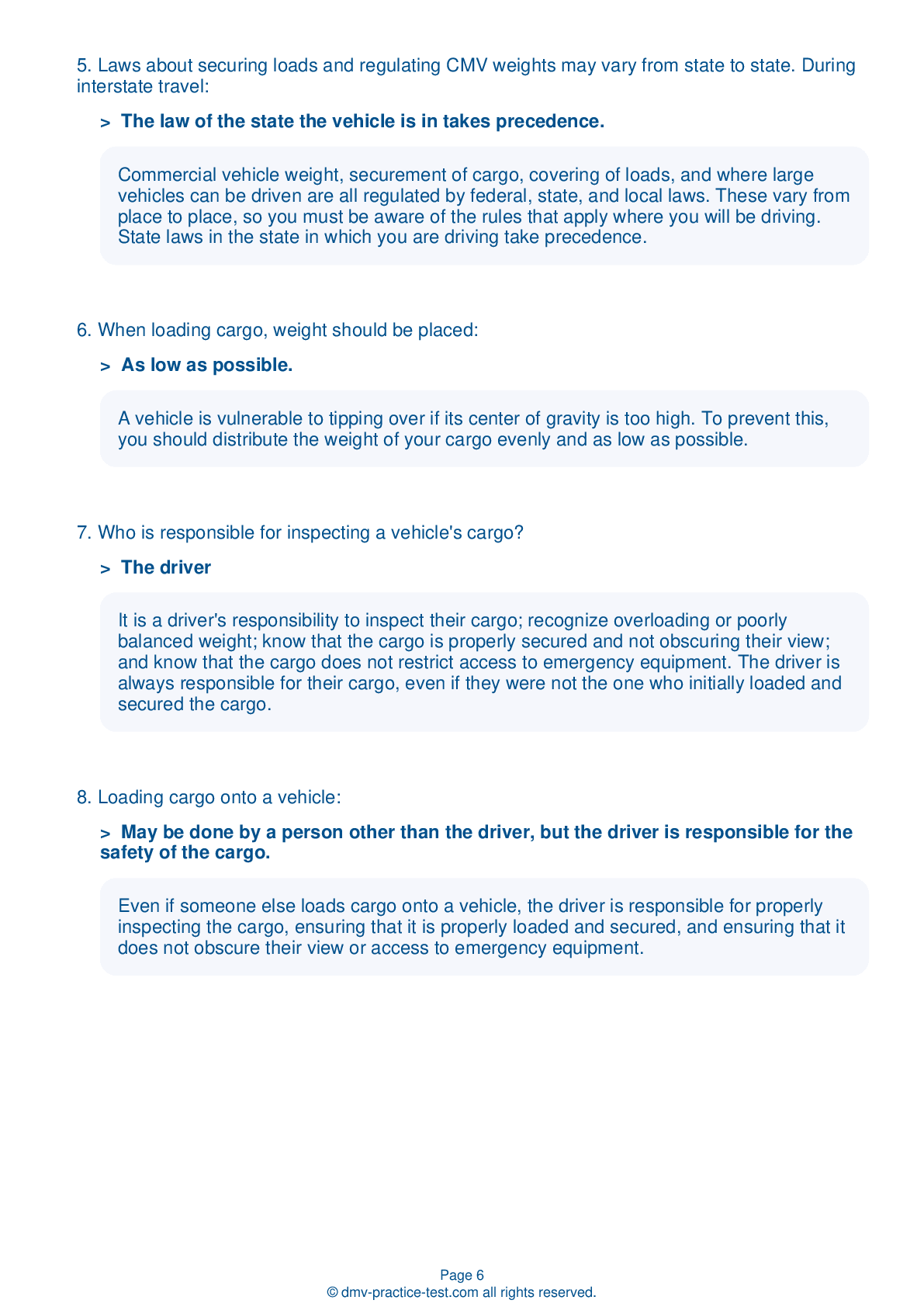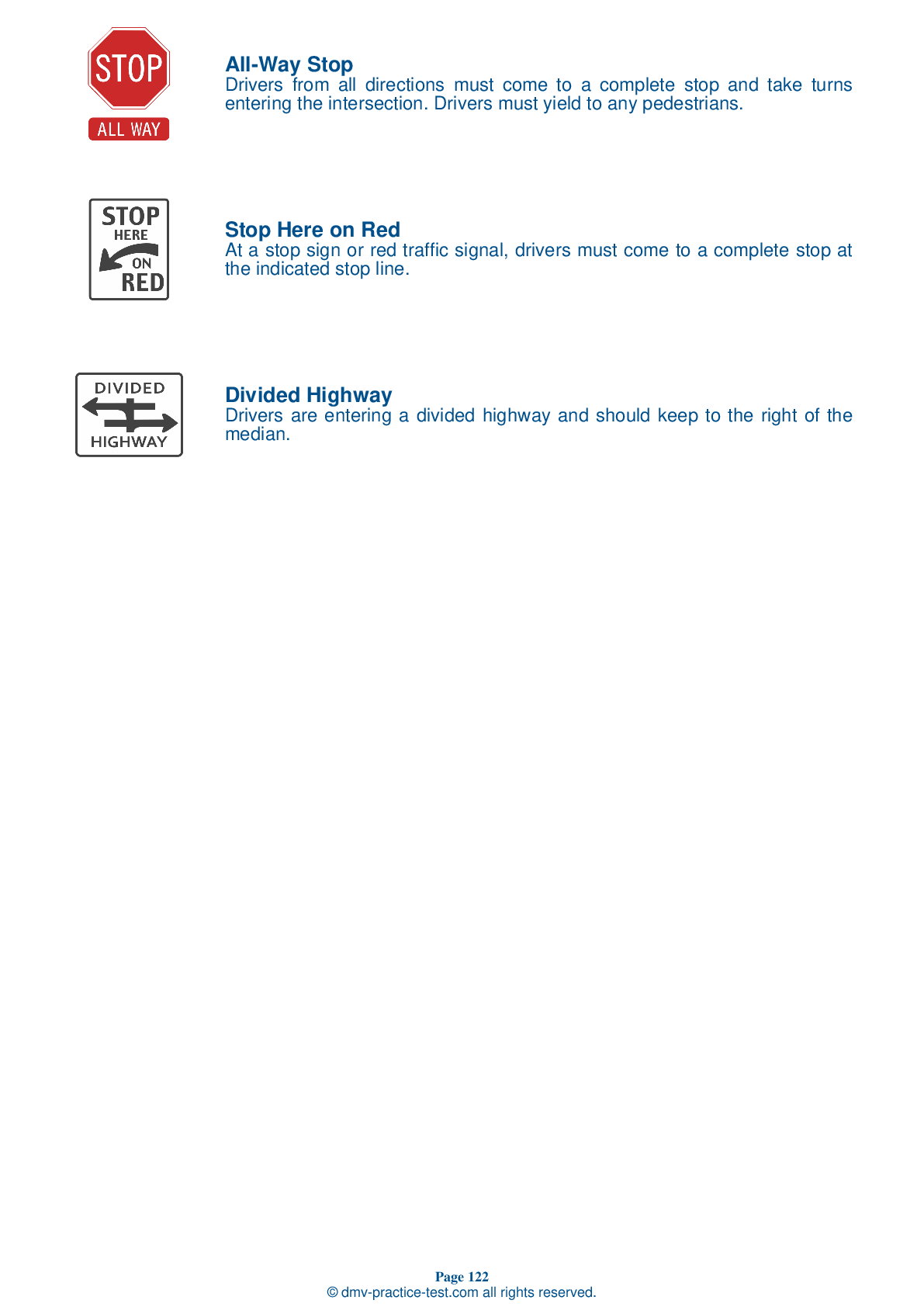Knowledge Test Class A #2
Class A Driving Test | Connecticut 2025 #2 Page 4 of 7
Train for FREE online with our Connecticut class A license test. The official exam test consists of several obligatory parts, with all of them checking your knowledge of different blocks of road rules. If you need to obtain a CT CDL class A permit in 2025, practice as much as possible. Free sample tests published on our website will help you check and improve your knowledge and boost your grades. Please bear in mind that CDL class A requirements may vary from state to state.
50
40
20
22 . If a five-foot-long item is placed on a flatbed trailer, it must be secured by at least:
Cargo that is required to be tied down should be secured by at least one tie-down for every 10 feet of cargo length. However, at least two tie-downs should be used no matter how small the cargo is.
23 . If taking the driving test and the route does not include a railroad crossing, you:
If your on-road driving test route does not include a railroad crossing, you may be asked to explain and demonstrate the proper railroad crossing procedures to the examiner at a simulated location.
24 . Which of the following is not a sign of fatigue?
Drifting from your lane
Driving while fatigued is dangerous. Warning signs of fatigue include difficulty focusing; repeated yawning or rubbing of the eyes; daydreaming or wandering thoughts; and drifting out of your lane.
25 . What is another name for front end header boards?
Bonkers
Front-end header boards, also known as "headache racks," protect the driver from cargo moving in the event of a crash or emergency stop.
26 . How does doubling your speed from 20 mph to 40 mph affect your vehicle's braking distance?
It quadruples.
Increasing your vehicle's speed will increase your vehicle's striking power and braking distance. Doubling your vehicle's speed from 20 to 40 mph will multiply its braking distance by four.
27 . If there are no warning gates or lights at a railroad crossing, you should:
Do whatever surrounding vehicles are doing.
A passive railroad crossing is a crossing that lacks control devices, like gates or warning lights. Before crossing a passive railroad crossing, you should search the tracks for approaching trains coming from either direction.
28 . If you must stop on the side of a one-way or divided highway, how far behind your vehicle should you place warning devices?
If you must stop on or by a one-way or divided highway, you must place a warning device 10 feet, 100 feet, and 200 feet to the rear of your vehicle.
Search the best driving school in your neighbourhood
2025 Connecticut | Frequently Asked Questions
A CDL Class A license in Connecticut allows the holder to operate any combination of vehicles with a Gross Combination Weight Rating (GCWR) of 26,001 pounds or more, provided the Gross Vehicle Weight Rating (GVWR) of the vehicle being towed is over 10,000 pounds. This typically includes tractor-trailers and truck and trailer combinations.
A Class A CDL license in Connecticut allows the holder to operate vehicles such as tractor-trailers, truck and trailer combinations, tank vehicles, livestock carriers, and flatbeds. The license is for any combination of vehicles with a Gross Combination Weight Rating (GCWR) over 26,001 pounds, if the towed vehicle exceeds 10,000 pounds GVWR.
To obtain a Class A CDL license in Connecticut, you must be at least 21 years old, possess a valid Connecticut driver's license, pass a vision test, and complete a commercial driver's license knowledge test. You must also pass a pre-trip vehicle inspection test and a skills test, which includes off-road maneuvers and on-road driving. Additionally, you must provide a medical examiner's certificate.
In Connecticut, you must be at least 21 years old to qualify for a Class A CDL license if you intend to drive across state lines (interstate). However, if you plan to drive only within Connecticut (intrastate), you can obtain a Class A CDL license at the age of 18.
Specific endorsements are not required for a Class A CDL license, but they can grant additional privileges. Endorsements include T for Double/Triple Trailers, P for Passenger Vehicles, N for Tank Vehicles, H for Hazardous Materials, and S for School Buses. Each endorsement requires passing a separate knowledge test and sometimes a skills test.
The Class A CDL skills test in Connecticut encompasses three main sections: a pre-trip vehicle inspection, a basic vehicle control test, and an on-road driving test. This assessment is designed to evaluate your ability to safely operate a Class A commercial vehicle, including checking for safety defects, maneuvering the vehicle in various situations, and driving in normal traffic conditions.
Yes, Class A CDL license holders may face limitations based on factors like the driver's medical condition, the type of vehicle driven, and the presence of certain endorsements. For example, drivers might be restricted to operating automatic transmission vehicles, or prohibited from driving tank or passenger vehicles without the appropriate endorsements. Also, all CDL holders must abide by federal hours-of-service regulations.
Yes, in Connecticut, the written Class A CDL test is available in multiple languages besides English. However, federal regulations require that all CDL holders understand English sufficiently to converse with the general public, understand highway traffic signs and signals, and respond to official inquiries and instructions.
Yes, you can request accommodations for the Class A CDL written test if you have a disability. The Connecticut DMV complies with the Americans with Disabilities Act (ADA) and provides reasonable accommodations like sign language interpreters, extra time, or tests in alternative formats. You should contact the DMV directly to arrange these accommodations prior to your test date.
If you fail the Class A CDL written test in Connecticut, you are allowed to retake it. However, you must wait a minimum of seven days before your next attempt. There is also a retest fee that applies each time you retake the test. It's recommended to study the CDL manual thoroughly before your next attempt.
